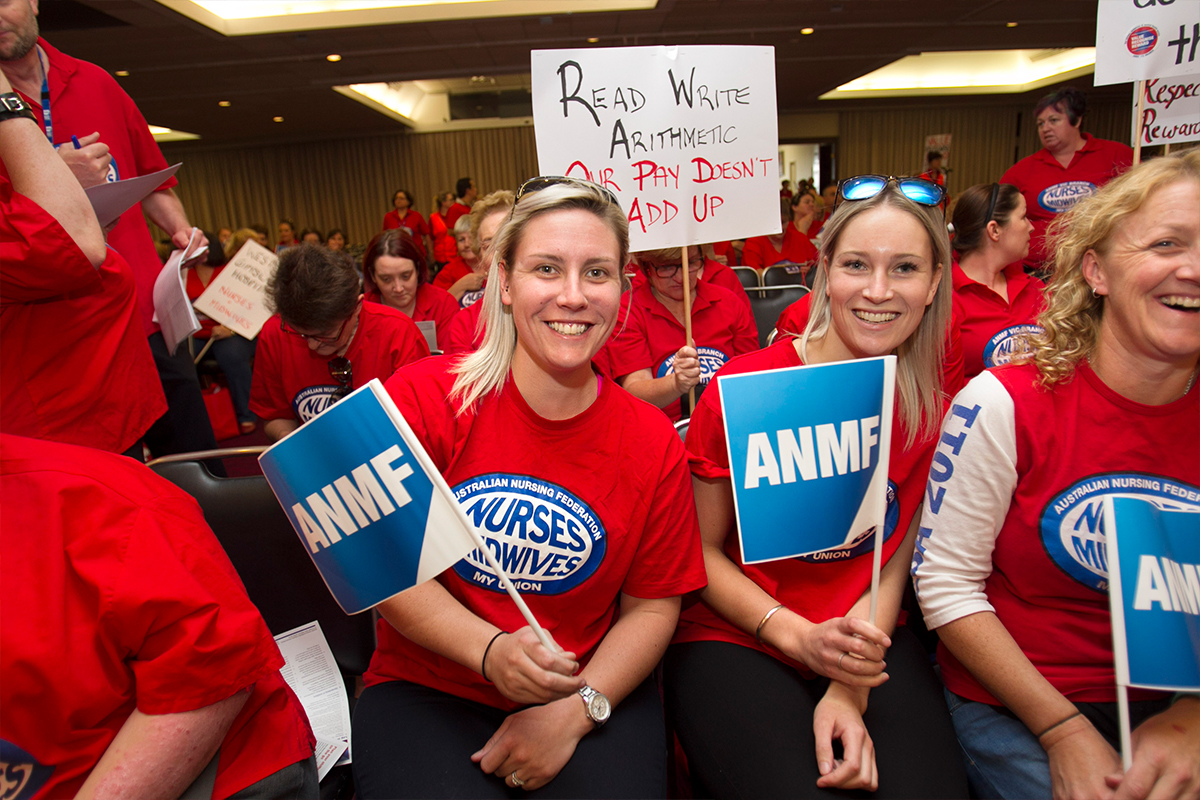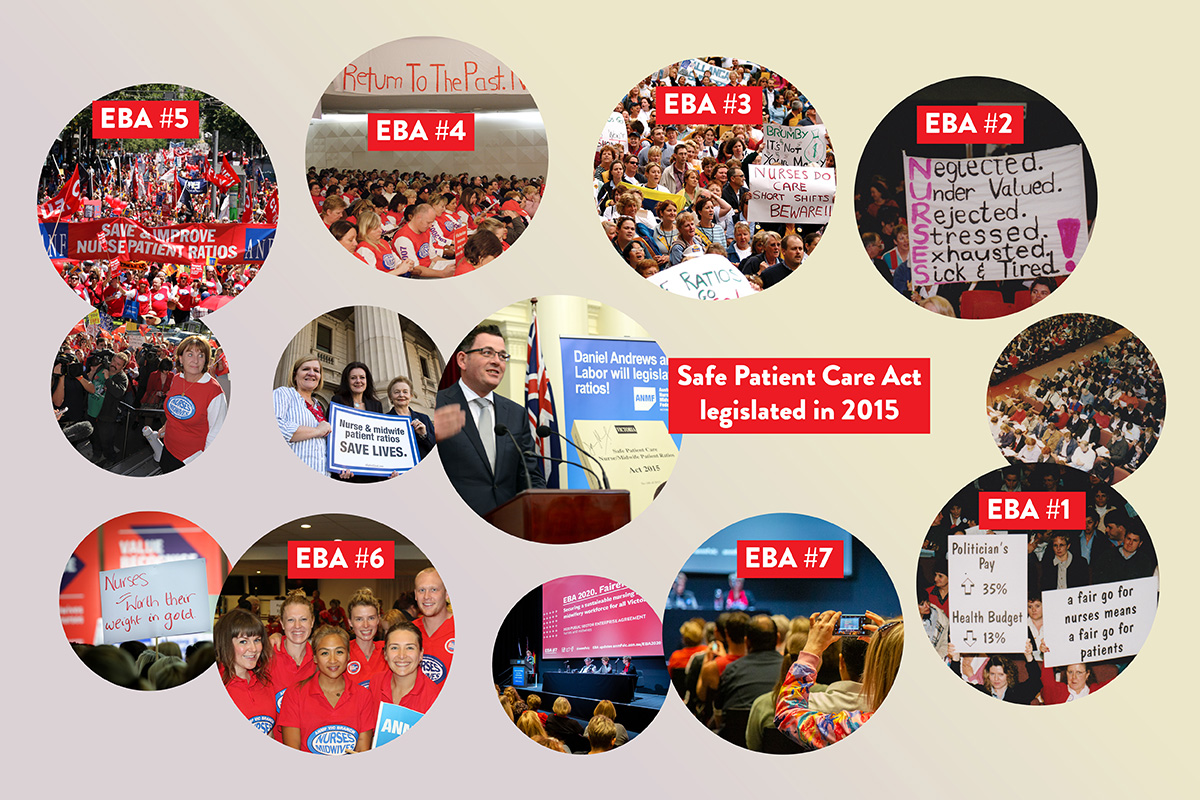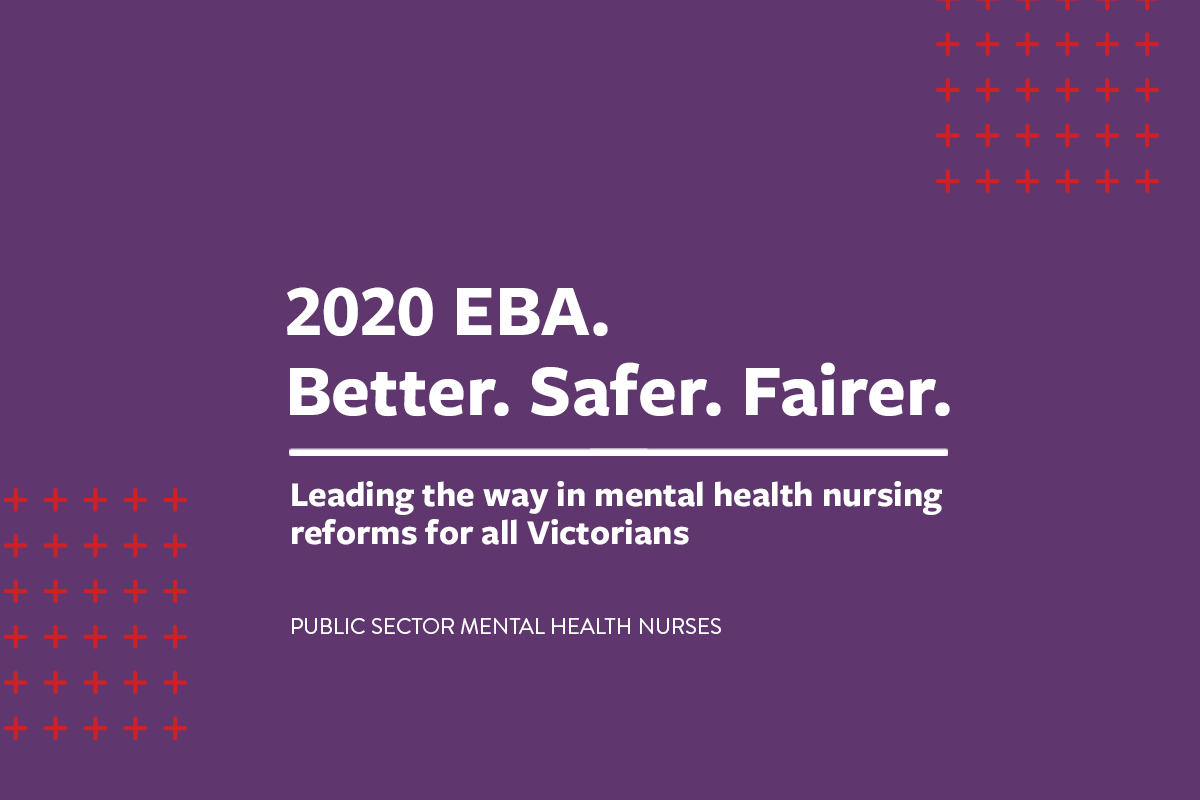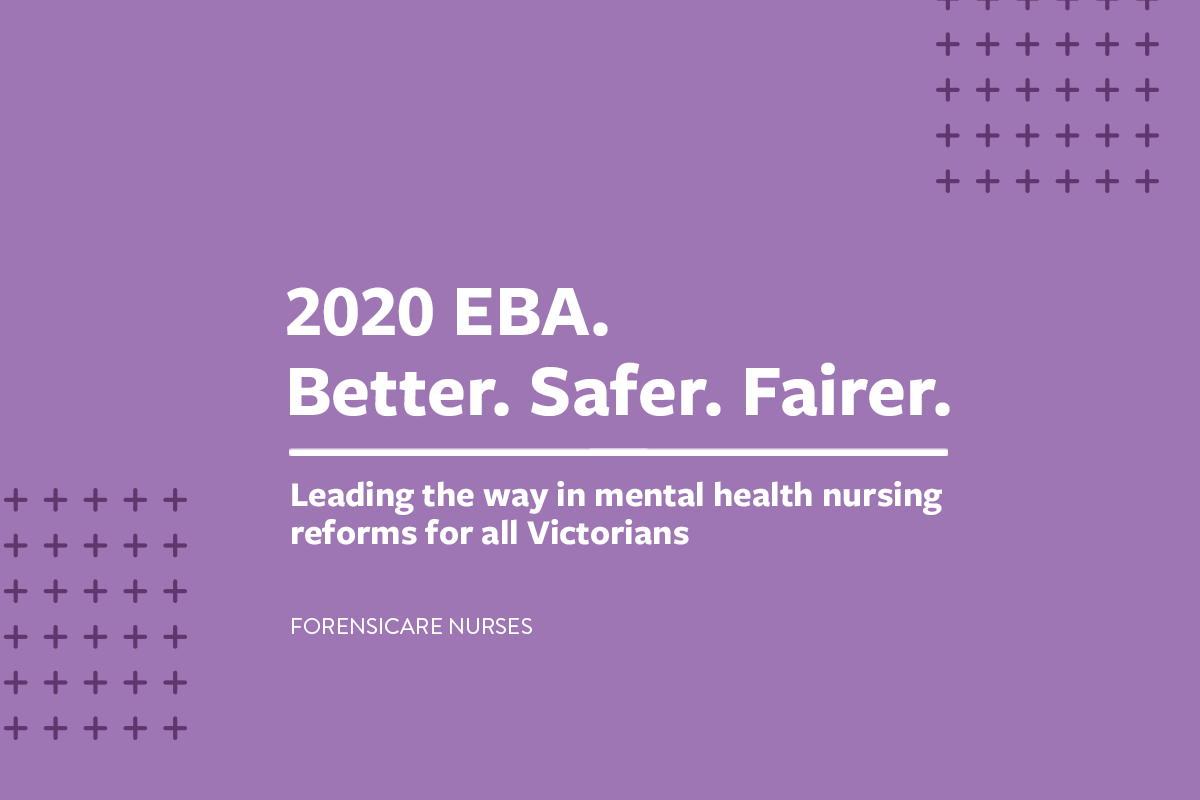
On Thursday 16 April, ANMF (Vic Branch) members will gather online in a statewide meeting to consider the 2020-24 Victorian public sector general enterprise agreement offer.
Pay rises for this agreement were negotiated as part of the 2016-20 enterprise agreement campaign, when members achieved the biggest pay rise in Victorian history. The pay rise for the 2020-24 agreement – 12 per cent over three years – was included in a Side Deed endorsed by the statewide members meeting on 5 May 2016 and confirmed at the statewide members meeting on 3 March. Negotiations about Victorian public sector nurses’ and midwives’ working conditions and definitions in the 2020-24 agreement began in October 2019.
ANMF uses the public sector nurses and midwives agreement as the benchmark agreement for negotiations in all other workplaces.
This snapshot of enterprise agreements (also known as enterprise bargaining agreements or EBAs) over more than 20 years, shows the key industrial campaigns and wins.
EBA #1
1997 EBA – dealing with a nursing and midwifery shortage

Nurses and midwives were overworked and resigning. Negotiations between the Liberal/National government and ANMF stalled. Members close one in five hospital beds. With the assistance of the industrial umpire, then known as the Australian Industrial Relations Commission, ANMF members won:
- an 11 per cent wage increase over three years
- 225 additional clinical nurse consultants and nurse educators, and increased nursing hours
- two weeks paid maternity leave – for the first time
- saved all director of nursing positions
- the return of specialist nursing positions.
EBA #2
1999 EBA – world’s first mandated ratios

Liberal/National government budget cuts meant workloads continued to cripple nurses and midwives. There were 1300 full-time vacancies across the state. The workforce was in crisis with nurses and midwives resigning or reducing their hours.
Talks between ANMF and the new Labor government stalled. After a short industrial campaign, with nurses closing one in four beds, the parties agreed to allow then Australian Industrial Relations Commissioner Wayne Blair to decide on the agreement. Commissioner Blair’s decision included:
- the world’s first mandated minimum nurse patient ratios
- a 12.5 per cent wage increase over three years
- re-introduction of the 8:8:10 roster to stop short shifts and reintroduce a safe handover period
- re-introduction of the postgraduate qualifications
- increased paid maternity leave from two weeks to six weeks
- reinstatement of accrued days
- doubling of the on-call allowance
- additional 50 associate directors of nursing, 50 nurse educators and 50 clinical nurse consultants
- two days study/conference/seminar leave per year
- three days professional development leave per year
EBA #3
2004 EBA – defending ratios

The Labor government tried to replace ratios with a computerised patient dependency system that relied heavily on using casual nurses and midwives. It also wants to remove the requirement for a nurse unit manager on every ward and restrict access to the clinical nurse specialist classification.
The government rejected ANMF’s entire claim, offering only 2.25 per cent per annum, plus an $6.65 per week before tax, if nurses and midwives agreed to give up nurse/midwife to patient ratios.
Members closed almost 1400 beds across the state over a two-week period, securing an agreement that:
- protected nurse/midwife to patient ratios
- secured a 12 to 15 per cent wage increase over three years with no trade-off
- increased paid maternity leave from six weeks to eight weeks
- increased annual leave for community nurses
- stopped the abolition of at least 700 clinical nurse specialist positions
- protected the 8:8:10 roster, prevented unlimited short shifts
- protected study leave and professional development leave.
EBA #4
2007 EBA – defending ratios again

The federal Liberal/National government’s WorkChoices laws created significant problems for Victorian nurses and midwives.
The new laws made it illegal to pay employees taking industrial action. Employers also refused to make an agreement to cover all public sector nurses and midwives.
After nine days of intense industrial action, over 5500 nurses at Festival Hall voted to endorse a settlement that:
- achieved a single agreement with common wages and conditions for all public sector nurses and midwives
- significantly increased the graduate nurse/midwife pay rate
- maintained nurse/midwife to patient ratios
- improved ratios in ante- and post-natal wards and unit and medical and surgical units in two regional hospitals
- secured a 16 to 24 per cent wage increase over four years with no trade-off
- increased paid maternity leave from eight weeks to ten weeks
- stopped the substitution of nurses with assistants in nursing in acute care, sub-acute care and high care residential aged care
- stopped unlimited short shifts
- stopped the removal of evening and weekend penalty rates to be replaced with annualised salaries
- stopped the removal of the requirement for a director of nursing on each campus
EBA #5
2011–12 ‘Respect our work’ EBA campaign – defending ratios again

ANMF started negotiations with much needed claims to improve nurse/ midwife: patient ratios.
The Liberal/ National government’s plan was to abolish ratios and replace registered nurses with unqualified health assistants and introduce split shifts and four-hour shifts.
ANMF members participated in a nine-month campaign to keep what they had. Nurses and midwives closed one in three beds (700 beds were closed at the peak of action), had their pay docked, held 35 community rallies, held a 10,000 strong CBD rally and doorknocked 19,000 homes in the marginal seat of Bentleigh. Almost 3500 nurses and midwives signed a resignation authority in the event ratios were lost.
Fifteen hospitals participated in rolling walk-outs with Royal Melbourne Hospital leading the way. Almost 3500 nurses and midwives signed an ‘intention to resign’ if ratios were not saved.
ANMF members:
- saved ratios and improved rehabilitation and day oncology ratios.
- stopped the substitution of nurses and midwives with unlimited health assistants as part of ratios, stopped unlimited four-hour shifts and stopped split shifts.
- achieved a new enrolled nurse career structure
- achieved an annual wage rise of 2.5 per cent. When combined with a new annual $900 continuing professional development allowance ($1000 in the first year) – this lead to annual increases of between 3.5 and 4 per cent per annum. (Note: the CPD allowance was rolled into the base rate in the 2016 EBA to ensure all nurses and midwives received it, including casual and bank staff and people on unpaid leave, e.g. parental leave)
EBA #6
2016 EBA – biggest pay rise in Victorian history

This was the first EBA in more than 20 years that did not involve ANMF members taking industrial action. The agreement no longer included ratios which were enshrined in law the previous year.
ANMF (Vic Branch) negotiated pay rises for Victorian public sector nurses and midwives which saw them reach net pay parity with NSW counterparts. There was also an agreement on wages rises for the 2020 EBA. A comparable agreement was reached for public sector mental health nurses.
Wages and allowances
- April 2016 – 3.6-4.8 per cent (included rolling existing annual $900 CPD allowance into the base rate)
- April 2017 – 3 per cent
- April 2018 – 3.25 per cent
- April 2019 – 4 to 26.72 per cent depending on classification to reach net pay parity with NSW nurses and midwives
There were many other improvements including superannuation payments on paid parental leave, OVA prevention measures and modernising the career structure, including the new nurse/midwife unit manager structure.



